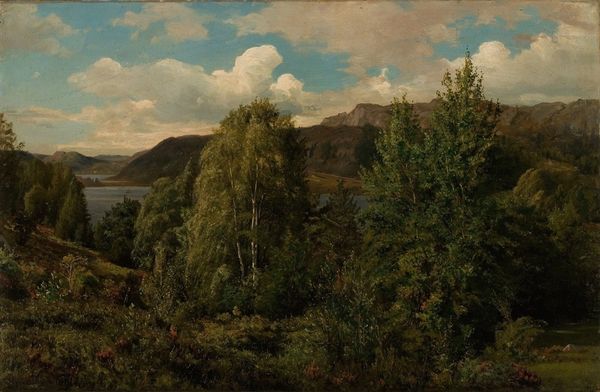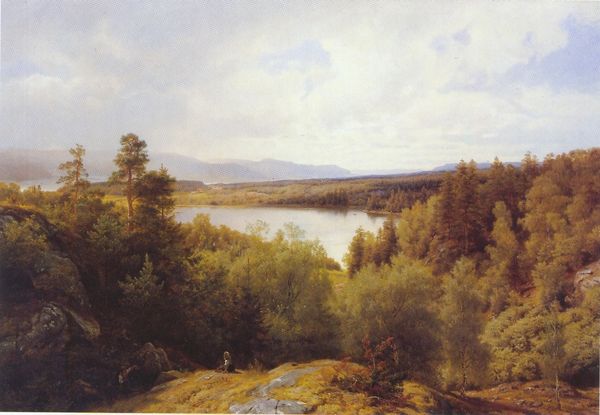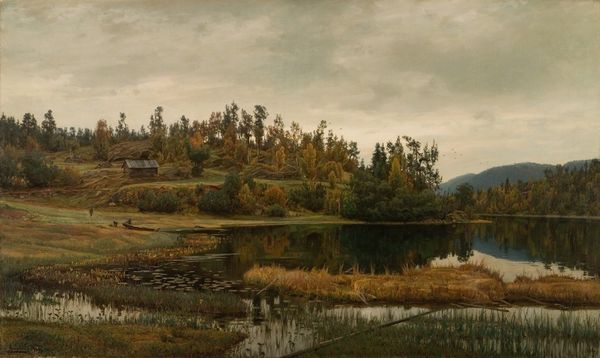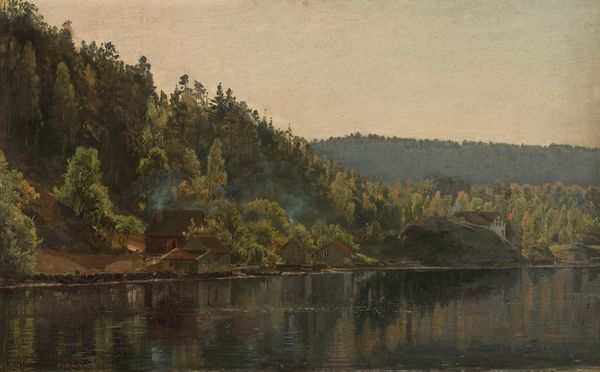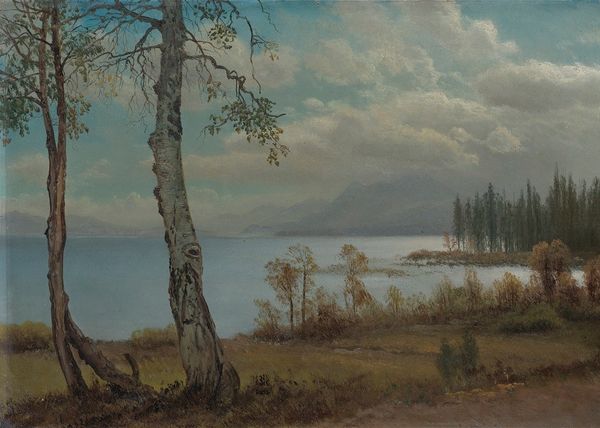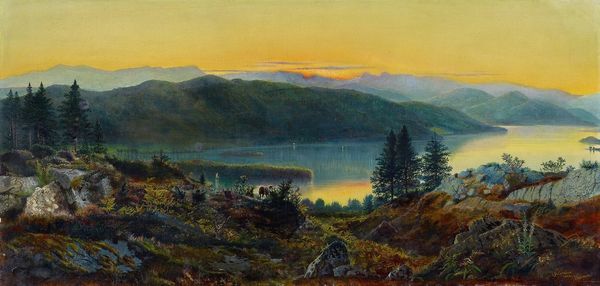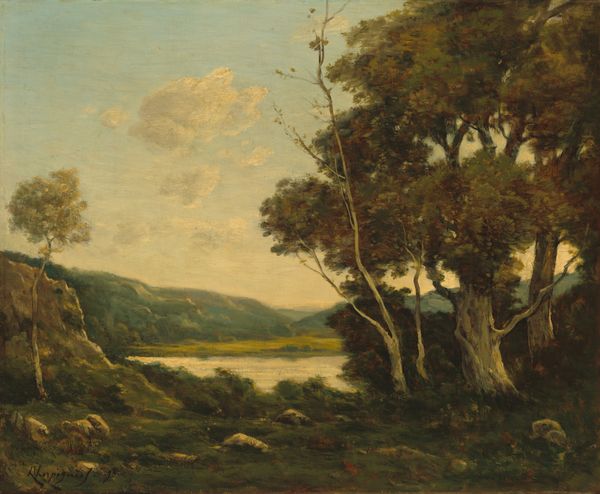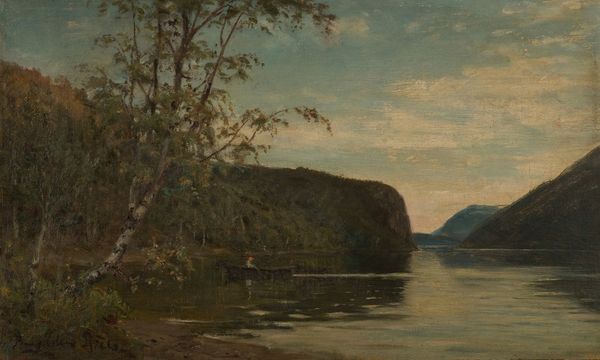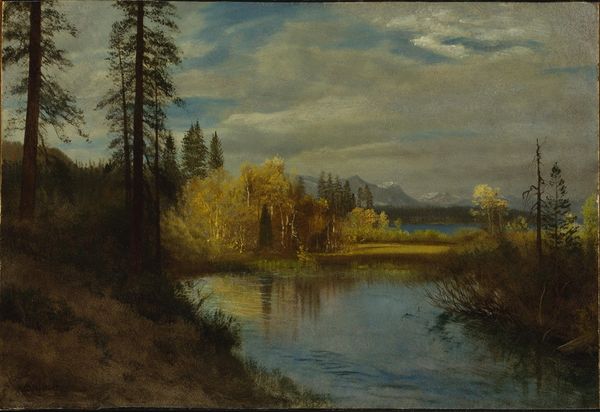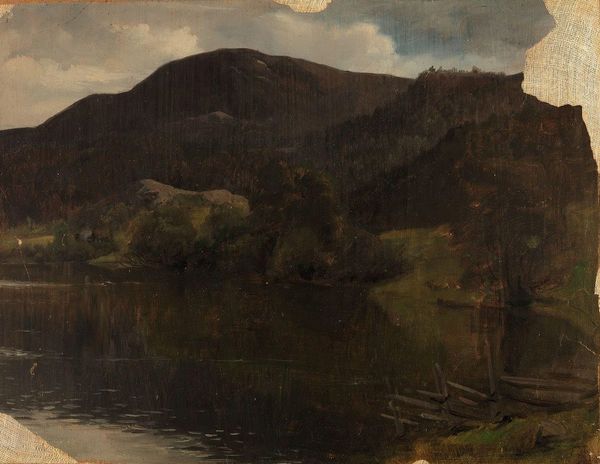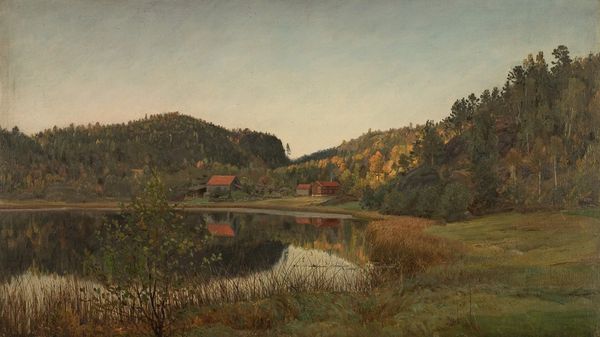
Copyright: Public Domain: Artvee
Curator: Oh, look at this gem, an oil on canvas from 1863 called "Høstaften, Mandal" by Amaldus Nielsen. Doesn’t it just whisper tales of a peaceful autumn evening? Editor: It’s… brown. Beautifully brown, like burnt sugar left a little too long on the stovetop. Is this landscape painting yearning for coffee perhaps? I wonder about the pigments available in 1863 that leant to such warm tonality and how readily accessible those would have been at this point in time for the common artist. Curator: Ah, but that "brownness", as you call it, evokes such warmth! Nielsen really captures the melancholy sweetness of the season. Those looming hills across the still water - doesn't it pull you into that scene? And the textures created by such visible, loose brushstrokes across a smooth surface: divine. Editor: Definitely a study in textural contrast. Those feathery trees versus the smooth, reflective lake surface and I notice a small but important figure tucked at the front... I wonder what grade of canvas was used and how much of an expense procuring painting materials would have presented in the mid-19th century Norway? I find myself musing on where it all came from; the flax fields of canvas, and the origin points of pigments - maybe something grown locally! Curator: Always the pragmatist, aren’t you? But to think of how something ordinary might have bloomed from earth just like what we see is... lovely. It does deepen my understanding to picture something born out of locale as it is represented. See, that's what Nielsen’s trying to do - to evoke a tangible *feeling* of the here and now. It reminds me that even in stillness, time continues to pass, no matter how imperceptible the flow. It’s profound. Editor: Exactly! It gives the materials a real purpose, a place in society. I am thinking about linseed oil, milling, pressing, and distribution routes - it paints a totally different picture for me to consider the amount of work to even just be able to set out to recreate an environment with paint on canvas. It is almost too romantic a notion, so what do you make of that figure now, set against these grander environmental scales? Curator: Intriguing. I almost missed the figure. They really represent human experience being placed in tandem alongside mother nature, just another observer! I had forgotten they are a working piece in how these scenes come to life and evolve with perspective over time, like these hills in our rear view. Editor: And suddenly it is much less about consumption. Alright Nielsen, you win this time!
Comments
No comments
Be the first to comment and join the conversation on the ultimate creative platform.
